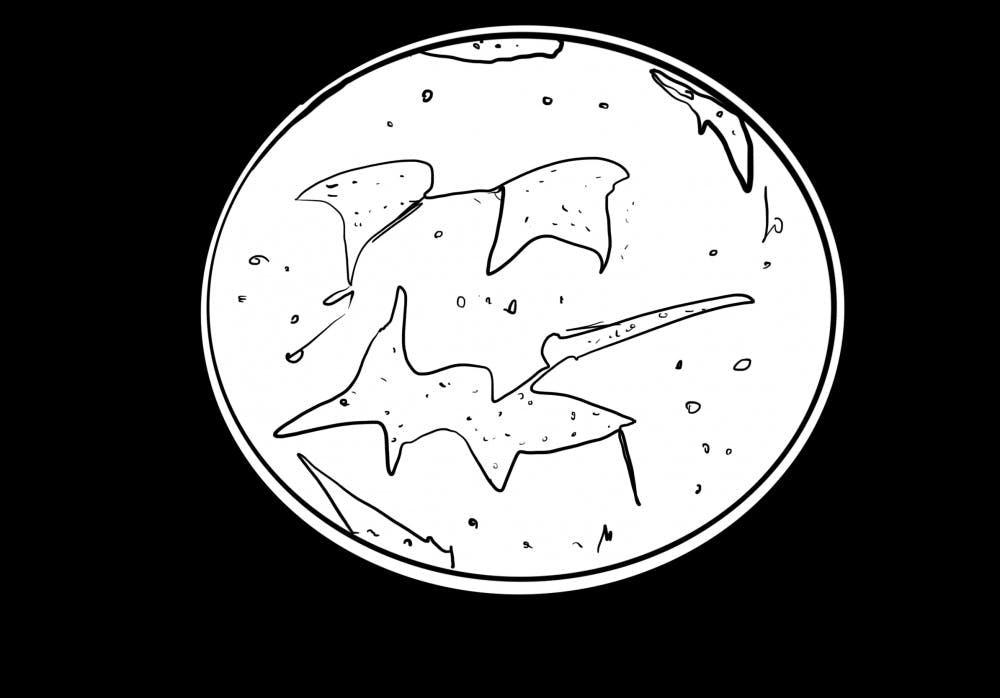Stopping the spread of cancerous cells has long been a challenge for scientists and doctors, and University researchers may have uncovered a possible solution that could improve cancer treatments.
By depriving certain cells of the substance needed to spur their growth, called a growth factor, future researchers may be able to stop metastasis, or the spread of cancer, according to a new University study.
The research was conducted by the Wong Lab, comprised of Susan Leggett PhD ’18, Zachary Neronha ’19, Dhananjay Bhaskar GS and Ian Wong, assistant professor of engineering.
The researchers found that epithelial cells — located on the surface of the body — that have been deprived of the epithelial growth factor demonstrated a decrease in movement and clustered together into branch-like formations.
The study examined MCF10A, a cell model based on breast epithelial cells. Just like particles suspended in fluid, the human breast cells also started off moving randomly but then stuck together when they came into contact with other cells in the environment, depending on factors such as cell density.
“We were interested in a specific process that happens during tumor progression, called metastasis, where cancer cells invade their local environments and eventually find their way to the bloodstream, from which they go to other organs,” Dhananjay said. Cells can move through the bloodstream and to other organs in a process called EMT, or epithelial-mesenchymal transition.
“In processes such as wound healing, EMT is really useful since epithelial cells that are normally together have to move together to cover up a wound and to heal it. However, in cancer, this process allows cells to escape to the bloodstream from the original tumor site and spread to the rest of the body. This spreading process causes 90 percent of the cancer deaths in the US,” Neronha said.
There are two kinds of ways that cells come together, and this process is affected by the presence of a growth factor. Under standard conditions, the cells tend to slow their movement and form more high-density clusters without stable connections. But when they are deprived of growth factor, the cells “slow down at much lower densities, as they form meaningful and stable connections with each other,” Neronha said.
The study found that in the condition without the growth factors and EMT movement mechanism, the cells formed their respective branch-like clusters but stayed apart from each other. But, when EMT was turned on, the clusters came together to form a “stable web-like structure,” Neronha said.
“We found that if we starve these cells from the growth factor, they are no longer able to invade their local environment,” Dhananjay said. “Reversing EMT is considered a promising area of cancer research. For example, if we had a drug that could go to the tumor site and absorb the EGF, that would be one way of reversing EMT and preventing metastasis,” he added.
“(We) showed that if we also added a certain chemotherapy drug, it … had the same effect as removing the growth factor. So, we can start to manipulate these pathways to control how the way cells move, which might have applications in cancer therapy,” Wong said.
The researchers would like to move the experiment from Petri dishes to computer simulations for future research, Wong said.
“We want to work with calibrated mathematical models to simulate the experiments in order to see whether it would yield promising results. We’d have to analyze the 3D images and simulations to draw results so 3D image analysis is something we are working toward,” Dhananjay added.
Correction: A previous version of this article's sumdeck stated that decrease in growth factor is key in preventing cancer's spread, but the researchers did not reach a conclusion about the spread of cancer. In addition, a previous version of this article said that cells can move through the bloodstream into other organisms, but they actually move into other organs. A previous version of this article also stated that cells come together in two ways when suspended in fluid, but the fluid is irrelevant. A previous version of this article stated that turning off EMT would limit the spread of cancer cells, but it in fact enhances the spread of cancer cells. The article has been updated to reflect these changes. The Herald regrets the errors.





